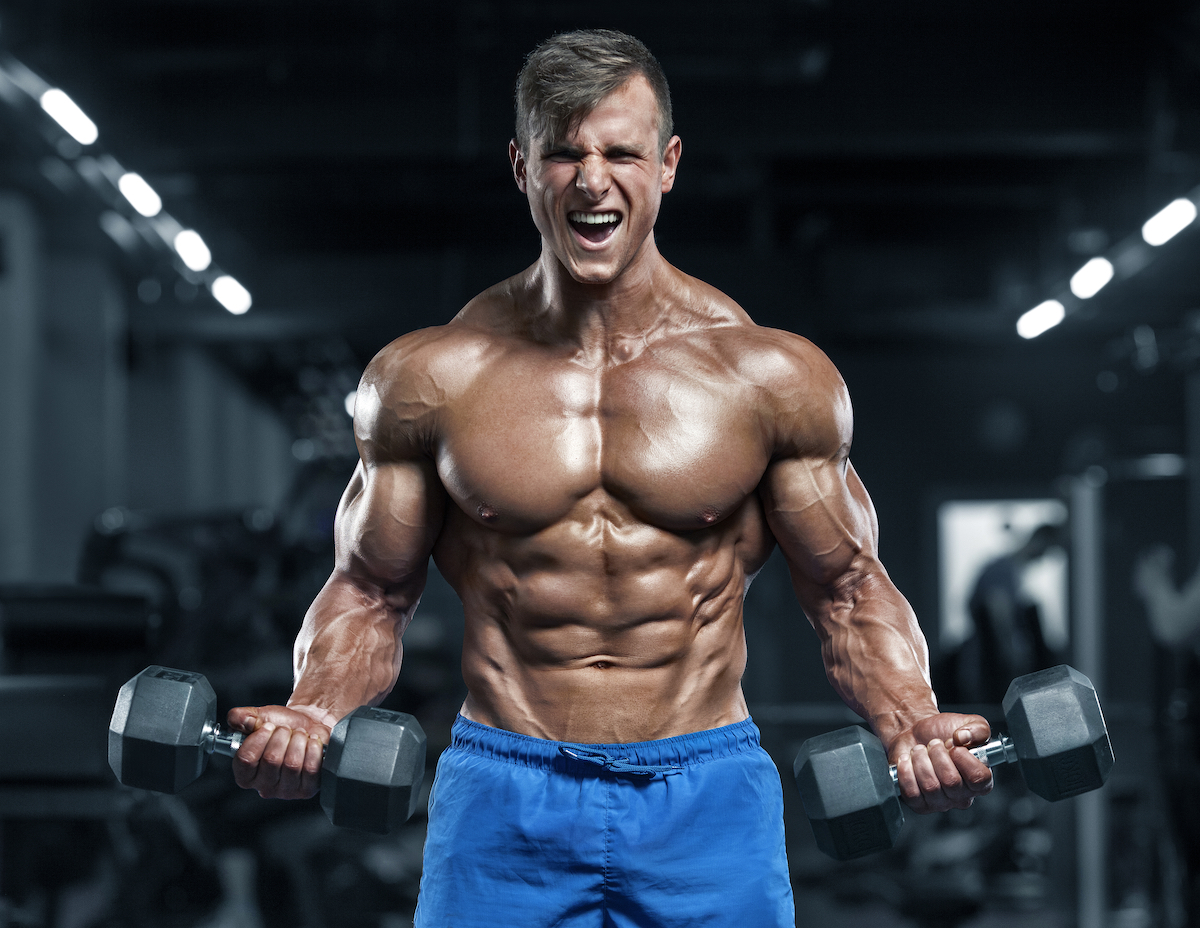Three Factors to Improving Your Physique

Ashleigh Atkinson obtained her Bachelors of Physical Education from Brock University, followed by her Masters of Human Kinetics from the University of Windsor. Ashleigh works as a health promotion specialist, runs a successful online coaching business with her husband, and is a national level figure competitor.

Three Factors to Improving Your Physique
By Ashleigh Atkinson, MHK
In the competition world, athletes rotate between being in prep and an offseason (aka improvement season). Whatever you call it, you want to make the most of the time that you’re out of prep to improve your physique. To do so, there are three main factors you need to focus on.
Train for Hypertrophy
 Weight training puts stress on the muscle fibers, creating damage which the body then repairs. Through the repairing process, the muscle gets stronger and (eventually) bigger. While some people are hyper-responders and will see growth faster than others, in general, this is a long process. So, be patient, consistent, and work hard in each session.
Weight training puts stress on the muscle fibers, creating damage which the body then repairs. Through the repairing process, the muscle gets stronger and (eventually) bigger. While some people are hyper-responders and will see growth faster than others, in general, this is a long process. So, be patient, consistent, and work hard in each session.
To make the most of your time in the gym, you need to train for hypertrophy. It may seem obvious, but training to sculpt a physique requires more than just heading to the gym and lifting weights aimlessly. When structuring your plan for growth, consider the frequency you hit a muscle group, the rep range you use, your technique, and optimizing your training schedule.
Your split should hit every major muscle group, possibly grouping them strategically so you can work a lagging muscle group twice in the rotation. When it comes to reps, don’t get caught up in setting new 1RM records here – save that for powerlifters who compete this way. As a general guideline, working somewhere in the 6 – 12 rep range is best for hypertrophy. Also, make sure the reps are good quality with strong technique. Don’t use momentum, and make sure the target muscle is truly doing the work. Finally, make sure your schedule is strategic. For example, prioritize lagging muscle groups by putting them after a rest day to have the most energy possible.
And don’t overlook intensity! Make sure you don’t shy away from pushing your limits with weight. Use progressive overload to continue adding stress to the muscle, whether that’s by adding weight or reps. Even small increases add up over time, so don’t overlook that 5lb plate or an extra half rep.
Eat to Grow
 Your muscles need raw material to grow, meaning calories. Eating in a surplus – more calories than what you need to just maintain your weight – is necessary now to support growth. The offseason is also the time to ensure you’re eating a well-rounded diet with a variety of foods for an array of nutrients, which support your training and recovery.
Your muscles need raw material to grow, meaning calories. Eating in a surplus – more calories than what you need to just maintain your weight – is necessary now to support growth. The offseason is also the time to ensure you’re eating a well-rounded diet with a variety of foods for an array of nutrients, which support your training and recovery.
There’s a line between an optimal amount of body fat and going overboard. No one is saying you need to get overly fat to improve, but you will naturally put on some body fat from eating in a surplus. You don’t need a massive quantity of extra calories to grow, and you should gradually increase calories as your body plateaus. This may be bigger jumps for some people and smaller increases for others, depending on how they respond and process the calories.
Often, competitors see this time as a green light to overeat. Remove the word “bulking” from your vocabulary if it’s synonymous with eating piles of junk food or rapidly gaining fat. You don’t need to, and shouldn’t, gain weight each week of your offseason. Instead, let your body adjust to certain weights before pushing things again. Depending on your category and improvements needed, you may not need to gain much weight, but you should always ensure you’re supporting your body for recovery and your general health.
You also need to factor in cardio – if you’re trying to “out cardio” a bad diet, you’re digging yourself into a hole that is going to make prep much more difficult. Get control over your nutrition and use cardio as an added tool for general health and to help spike appetite from time to time.
Rest and Recover
 An athlete can easily get caught up in wanting to improve a number of muscle groups, and it can seem like there aren’t enough days in the week to hit everything adequately. For that reasons, many will overload their week, and their central nervous system, by training too frequently in the panic to make everything better. Stop right there.
An athlete can easily get caught up in wanting to improve a number of muscle groups, and it can seem like there aren’t enough days in the week to hit everything adequately. For that reasons, many will overload their week, and their central nervous system, by training too frequently in the panic to make everything better. Stop right there.
Without time off, your body doesn’t have the time it needs to recover… and grow. While it may seem counterintuitive to be away from the gym, it’s necessary to help make your improvements. Train hard and then give your body the downtime it needs to get better – that’s the whole point of offseason, right?
If you’re unable to take rest days off the gym without feeling anxious, guilty, or worried that you’re going to get fat, there could be a bigger problem to deal with. All athletes love putting in the work for their sport, but the strongest ones appreciate and understand the balance needed to be at their best. Use your rest days to prepare for the week by prepping your food, taking care of life stuff like laundry and errands, or spending time with friends or family.
Make the most of your offseason by focusing on these three aspects which are critical to your progress. Always keep your goal in mind and structure your plans accordingly. If you spend most of your offseason under or overeating, skipping workouts, training in a way that doesn’t support muscle growth, or overlooking the need to rest, you’ll likely bring the same physique to the stage next time.
Follow & connect with Ashleigh on Instagram @iron_forged_fitness

